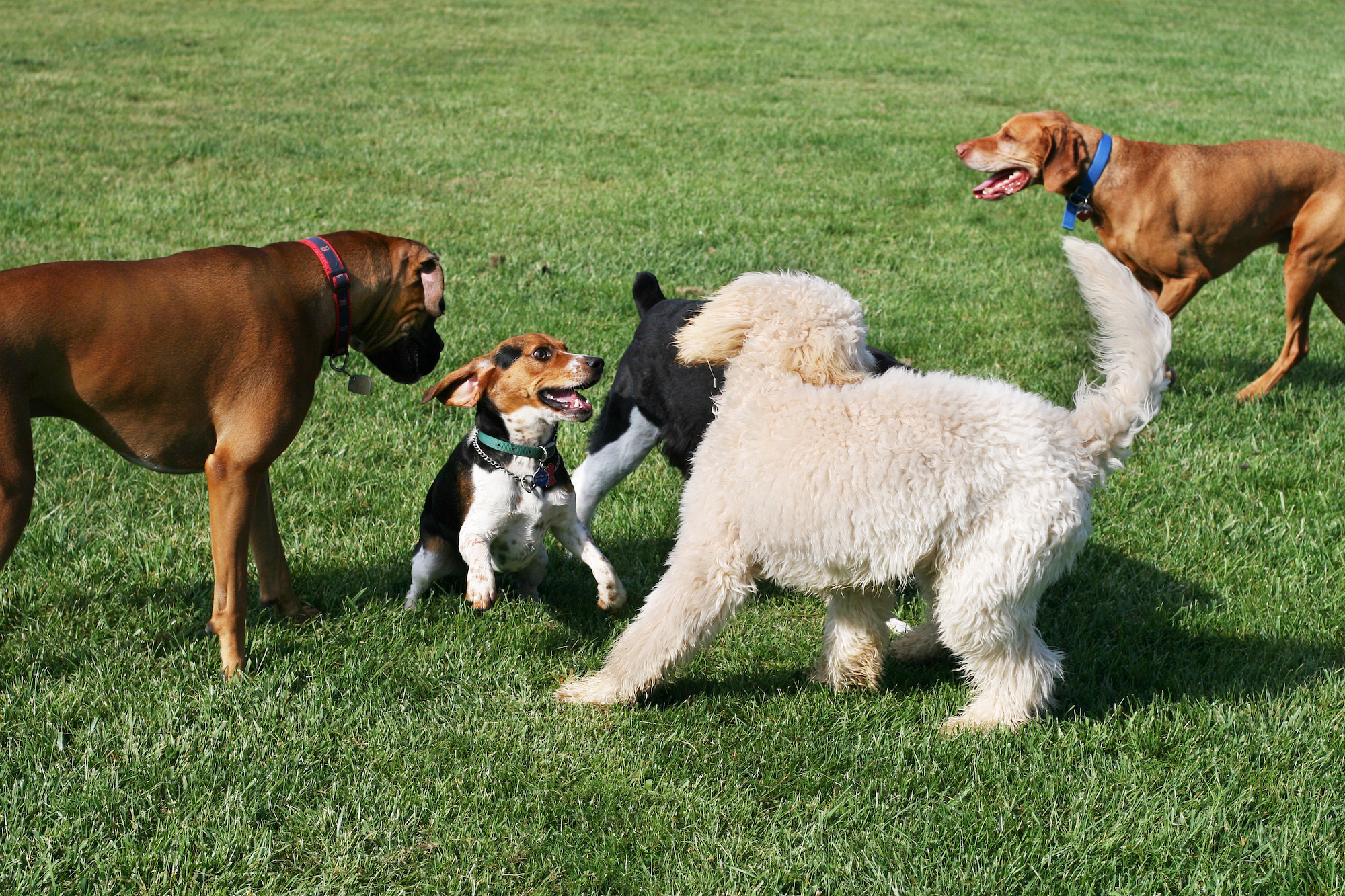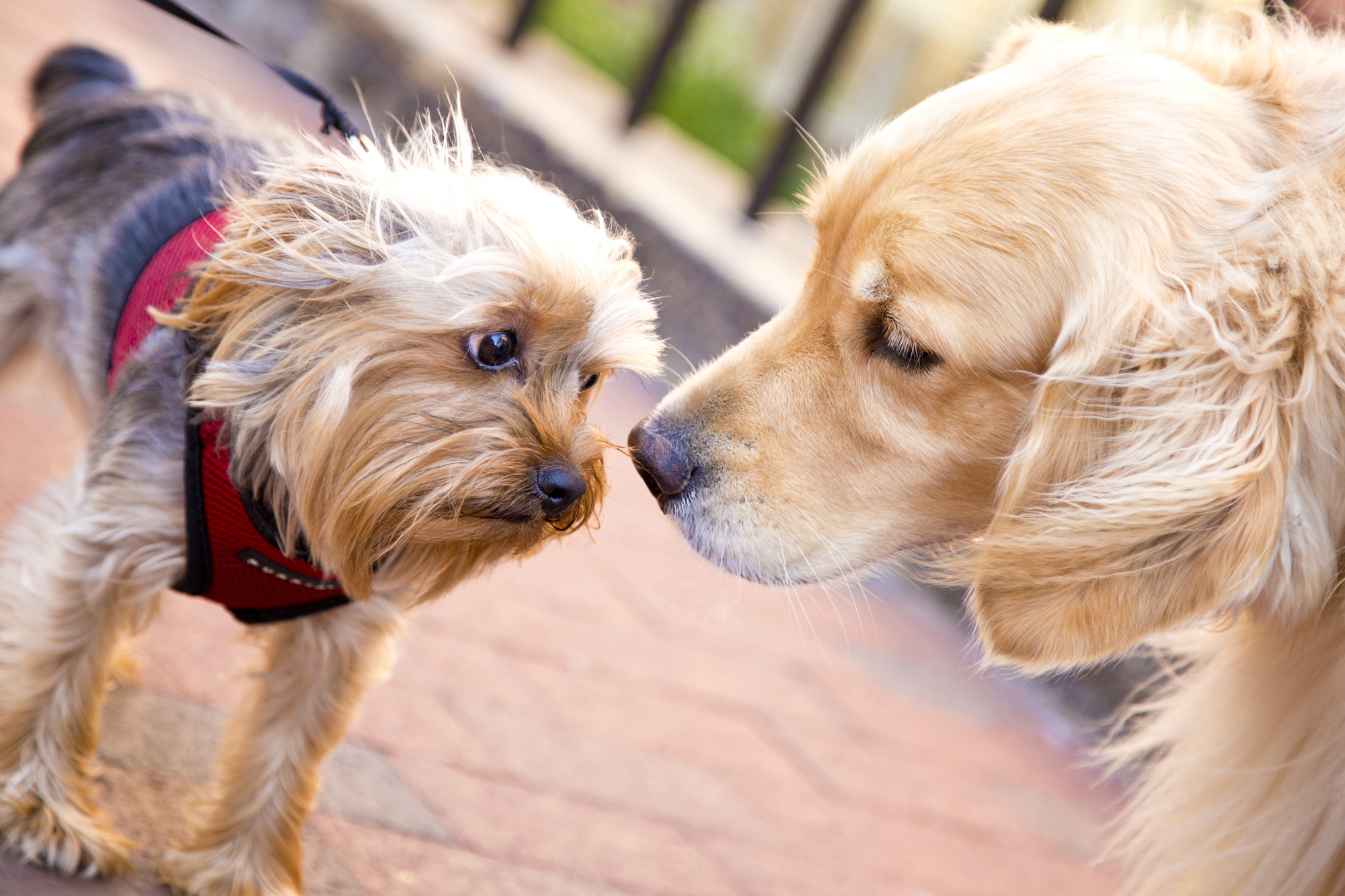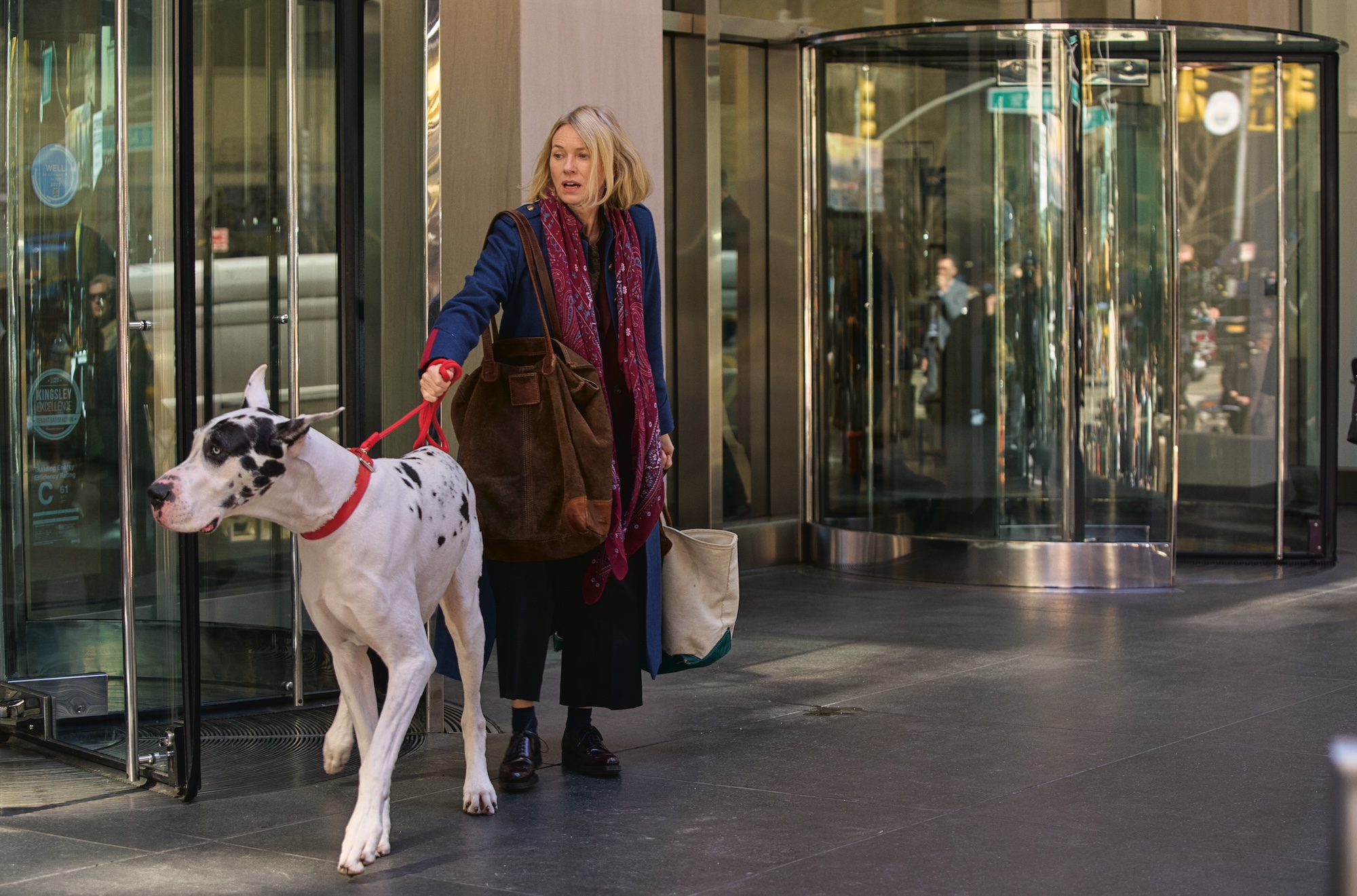In one’s mind at least, the dog park can seem like an urban paradise. Green grass, frolicking pups, happiness, freedom, and nary a fight nor frown. But in reality, things can get dicey—dangerous, even—at these off-leash oases. Bad behavior, and flat-out fights, are common. You are, after all, gathering a bunch of canine strangers and letting them loose in an enclosed space, without a set of clearly understood rules. There’s a reason that many a trainer (and more than a few vets) will tell you to steer clear of these spaces entirely.
But if you live in a city, where off-leash opportunities are scarce, you may be reluctant to rule out these designated dog areas. So, to help keep your dog safe, healthy, and happy, here are a few things to consider before deciding to take your pup to the park, and some safety tips to keep in mind if you do go.
Make sure your dog likes the company of other dogs
Dogs are individuals. While one might enjoy a social environment, another might feel scared or stressed. This includes dogs who don’t like the company of any other dogs, dogs who are dog-selective or don’t like a large number of dogs in their space, and certainly dogs who have a history of aggression toward or fear of other dogs. These are not good candidates for the dog park. Look for what your dog is attempting to communicate about their social preferences, and listen to them—they know best. Before you put your dog into a situation with a group of other off-leash dogs, observe how they interact with the dogs in their social circle, or dogs they meet on the street (and pay attention to body language—see below).
And no, you don’t have to feel like a bad dog guardian for not pushing your dog to have the dog-park experience. “If we’re pushing them past their comfort zone, we’re flooding them,” says Massachusetts-based dog trainer Jenny Efimova. “We’re putting them in situations that they find aversive or really uncomfortable, without the opportunity to move away, which can be very damaging.”
Instead, seek out other types of enrichment that your dog might enjoy more, like long walks with lots of opportunities for sniffing, or sports you can participate in together. They will be grateful.
Understand what “socialization” means, and what it doesn’t
“A lot of folks feel like they need to ‘socialize’ their dogs—like their dogs have to be social,” Efimova says. But socialization isn’t just about your dog’s social time with other dogs; it’s a bigger, more important premise and process. Socialization is a finite developmental period and the golden “window of socialization” for dogs happens between birth and approximately 16 weeks of age, when they’re still cognitively flexible (read more about socialization here).
During this period, introducing your puppy to other dogs, people, objects, and situations in a positive, controlled way is paramount. During this true socialization period, seek out a reputable puppy class, where play is monitored and supervised. This will help, too, in determining your dog’s candidacy for the dog park. “You want to make sure that they enjoy play—that they engage in reciprocal play, that they disengage from play easily, and that the disengagement happens in a positive way,” Efimova says. Bringing a puppy to the dog park is not recommended under any circumstance.
And although they can’t be resocialized per se, older dogs are always learning. After the socialization period ends, a dog guardian should set their sights on positive learning experiences that enhance a dog’s life in accordance with their personality and desires.
Understand what your dog is communicating through body language
The very first thing Efimova recommends to people who want to bring their dog to a dog park is to learn dog body language, and the body language involved in dog-to-dog interactions. The latter means what dogs display to each other, and what healthy and appropriate play looks like. “Play is very nuanced, and body language is very nuanced, so it does take time to learn,” she says. “But it’s very worth it, because you can actually see and understand what your dog is communicating.”
Gaining an understanding of a dog’s body language can come through working with a trainer, those puppy classes we discussed, and personal research. Learn to identify the low-level signs of stress or discomfort—like lip licking, yawning, side-eye or whale-eye, and avoidance. If you see your dog is overwhelmed by other dogs — showing avoidance body language and behavior, moving away, and showing they’re not comfortable—you should remove them from the situation (read and watch more on dog body language here).
Even if your dog is engaging in healthy play, you should interrupt them every once in a while for a break, so the play doesn’t escalate and become dangerous. This is where the important ability to disengage comes in. Efimova suggests prioritizing things like freedom of movement, sniffing, and exploring over consistent and repetitive play.
Remember, your role here is to protect your dog. Do not be intimidated by others at the dog park who might insist a certain kind of interaction or play is healthy when you feel it’s dangerous or not right. “I feel like some people think they should just let their dogs ‘figure it out,’ which … you shouldn’t,” Efimova says. Similarly, if your dog is confident in play, make sure they’re engaging in play that does not push or bully the other dogs at the park.
This brings us to our next point.
Pay vigilant attention to your dog
“Anytime you have more than two dogs playing together, things can go south pretty quickly,” Efimova says. “So be very, very vigilant and present with your dog at the dog park.”
While every suggestion here is very important, this may be the most important. If you check out the moment you unclip your dog—maybe you’re looking at your phone, or chatting with the other dog park humans—you’re putting your dog, and other dogs, in danger. They might be on the giving or receiving end of aggression, or engaging in play that is ramping up to become dangerous, or desperately trying to communicate their desire to leave, or having a blast; whatever it is, they need your eyes on them.
Heck, your dog could just be off pooping somewhere, and now everyone is looking at you thinking, “Um, are they going to pick up their dog’s poop? Or are they just going to look at their phone like a jerk?” And no one wants to be the poop jerk.
Do not bring your dog’s favorite toy
What to bring to the dog park: Your dog, a leash, poop bags, and perhaps some treats to reward good behavior. What not to bring: your dog’s prized toy—it will get eaten. And many trainers note that introducing coveted objects into a multi-dog environment like a dog park can lead to fights.
Aim to visit the dog park during off-hours, and make sure your dog has space
While we can’t always control our schedules, trying to get your dog to the park earlier or later than peak hours can help immensely in providing a safer environment. Beyond that, try to seek out an area where your dog has space to move and sniff freely, and don’t encroach on others who are attempting to do the same for their dog. For many, particularly those in cities, dog parks are the only places dogs can be off-leash; just because a dog is there enjoying this freedom doesn’t necessarily mean he or she wants company.
Some people only turn up at dog runs during the hours when they know they’ll be the only ones there (and when other dogs arrive, they head for the exit). Again, there are some dogs who will never be the life of the dog-park party. And that’s OK. While you’re the one holding the leash, being your dog’s best friend sometimes means following their lead.






